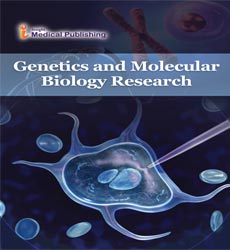Genetic and Environmental Factors Influencing Embryological Errors
Narender Kapoor*
Center for Bio-Technology, Institute of Science & Technology, JNTU University, India
- Corresponding Author:
- Narender Kapoor
Center for Bio-Technology
Institute of Science & Technology, JNTU University, India
E-mail: kapoornaren@gmail.com
Received Date: December 10, 2020; Accepted Date: December 20, 2020; Published Date: December 30, 2020
Citation: Kapoor N. Genetic and Environmental Factors Influencing Embryological Errors. Gen Med Biol Res. Vol 4 Iss No.3: 35.
Copyright: © 2021 Kapoor N, et al. This is an open-access article distributed under the terms of the Creative Commons Attribution License, which permits unrestricted use, distribution, and reproduction in any medium, provided the original author and source are credited.
Keywords Genetics, Embryological Errors
Commentary
In the entire biological world including microorganisms, it is the female strain/ female sex, which has been bestowed exclusive responsibility by the evolutionary plasticity for “conceiving” (becoming diploid by way of gemetes) and later nurturing the developing embryonal stages until the birth of next generation offspring. In this evolutionary compulsion, though genetically, both male and female “parent” contribute almost equally (50:50 for nuclear genes; but female gamete may have extra cytoplasmic genes in mammals), but the female parent has to depend on external environment, dietary intake and several harmful exposures.
Therefore, embryological developments are terribly prone to lot many environmental factors besides being dependent on gene combinations in the developing foetus for thousands of traits shaping within an individual, to be born. The developmental defects or malformations simply mean “traits present at birth”, which in turn are again two types; external malformations or developmental errors ( features) which we can immediately see and the internal congenital malformations which we cannot immediately see. The new generation individual has two phases, gross features which we can see or, are External and, Internal traits or organs which we cannot see. Considering situations in our species, we are more than selfish in improving over hundreds of malformations and or developmental errors.
Congenital anomalies in general populations will be presented on the following order with comments on their possible aetiology; role of genetic factors and role of environmental factors. (A) Simple anatomical errors : Digital errors in palms and soles Polydactyl, Internal:- Crossed Renal ectopia; (B) Major orthopaedic anomalies involving skull, limbs etc.; (C) Inborn errors of metabolism influencing congenital defects and internal developmental errors. Citing examples on published work, this presentation will focus on some very important and most relevant suggestions regarding: change in dietary or eating habits (consumption of addictive drugs), adaptive attitudes towards herbal medicines and strict avoidance of consanguineous marriages.
Open Access Journals
- Aquaculture & Veterinary Science
- Chemistry & Chemical Sciences
- Clinical Sciences
- Engineering
- General Science
- Genetics & Molecular Biology
- Health Care & Nursing
- Immunology & Microbiology
- Materials Science
- Mathematics & Physics
- Medical Sciences
- Neurology & Psychiatry
- Oncology & Cancer Science
- Pharmaceutical Sciences
